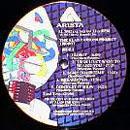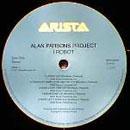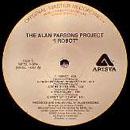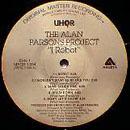![[SoundStage!]](../sslogo3.gif) Synergizing with Greg Weaver Synergizing with Greg WeaverBack Issue Article |
||||
| August 1999 Vertical Testing: The Value of Comparing Multiple Versions of the Same Recording What are you talking about? The concept of vertical testing is simple. In this case, it refers to identifying differences among multiple releases or pressings of the same recording. It is very useful from both educational and archival perspectives. On the learning side, you can very substantially increase your acuity in noting sonic differences. Becoming adept at differentiating small and often subtle sonic variances in otherwise identical material will really let you hone your listening skills. This acquired ability can then easily translate to listening to any set of objects, be they other software, preamplifiers, CD players or any other type of hardware. On the historical side, you may begin to have an understanding as to why audiophiles seek out and are willing to pay what can seem like outrageous prices for one particular release of a piece of music versus all others. One very nice thing about vertical testing is that it can be used repeatedly as an exercise in fine-tuning your hearing acumen. This is an invaluable skill set to develop if you want to affordably navigate the seemingly endless journey toward that "perfect" assemblage of equipment. Being able to note minute differences in performance can save you money in your audio quest. The mix
The lineage A simple and often fairly accurate judgment of the quality of a pressing may be deduced from the matrix number stamped in the run-out groove of every record. A brief and somewhat simplified lesson in record manufacture will help give some meaning to some of the information listed above. For our purposes here, we will ignore the process up to the point where the master tape arrives at the record plant. From that point, we will discuss the three steps in the manufacture of a record: the master disc cutting or mastering, the plating (often called matrixing), and the pressing. At the plant, an aluminum disc is prepared with a thick coating of lacquer. Well, sometimes. Increasingly since the early ‘80, no lacquer at all is used on the blank master disc -- just bare metal is used, leading to the term "Direct Metal Mastering." A blank disc is placed on a cutting lathe that functions much like a turntable, but with much higher mass. The master tape is played back through a disc-mastering console to control the noise reduction, RIAA equalization, speed alteration and the amount of "land" to be left between the grooves, and its output is then fed to a special amplifier. This amplifier in turn drives a device called the cutting head. The cutting head is the opposite of a cartridge in the same way that a microphone is the opposite of a loudspeaker. That is, it is used to convert the electrical signal from the controlling amplifier into the nearly one-quarter-mile-long single groove in the lacquer or metal disc on the lathe. To allow for the most ease in cutting, the cutting-head needle is heated and there is a great deal of attention paid to the speed stability of the lathe while it is turning. Audiophiles are often very interested in recordings known as "half-speed masters." In the case of a half-speed mastering, the tape and the lathe are each run at half of their original or intended speed. If the master tape was made at 15 IPS, then it is played back at 7 1/5 IPS while the lathe is turned at 16 2/3 RPM, one half the playback speed of 33 1/3 RPM. This creates a synchronized process permitting double the amount of time for the cutting head to do its difficult job, essentially allowing it to cut a more accurate re-creation of the recorded event onto the master disc. Once cut, this new and delicate master is too fragile be used to press the records, so a more durable copy must be made. Plating is next, where our newly finished master is coated with a thin layer of silver, and then electroplated in a nickel bath. The nickel plating represents an exact negative impression of the master, which is then removed. Electroplating this new negative mold now produces a positive stamper, or a "mother," which is nearly identical to, though literally two generations removed from, the first master disc. It is from this fabricated mother, or what is known as the pressing master, that all the stampers that will actually press the final records are made. A number of stampers are duplicated, coated with Teflon (a mold-release agent employed to reduce sticking), loaded into a record press and heated to allow for the best possible impression into the vinyl puck that will inevitably become the record we play. Mobile Fidelity chose to make only four such stampers for each title. Once those four stampers broke or wore out, no more copies of that title could be pressed. A hot blank of vinyl is placed between these stampers and then hydraulically compressed, typically at the rate of about 30 seconds per record, and voilá, music at last. The polyvinyl chloride used for impressing may be of very differing varieties. Virgin vinyl, which is what Mobile Fidelity and many other specialty houses pressed with, is made from previously unused stock that is colored with liquid dye, which does not detract significantly from its otherwise very quiet surface. More commonly however, a mix of virgin and regrind (which is comprised of ground-up, melted-down defective records and flash, the excess material taken from the very edges of the blanks after pressing) is used, which is colored with granular carbon black, which helps contribute to surface noise. Many less-concerned record manufacturers may press thousands of records from a stamper before replacing it. When a stamper finally does becomes too old, it has to be replaced by going back to the mother. If the mother has become too worn, a new one can be made once again from the master. If the master is too old, the whole mastering process must begin again. Years may pass between the first pressing of an LP and the second. In that period, the master tapes may have become seriously degraded. Loss of highs, hall ambiance and other problems, created by a process known as "print through" among other things, combine to cause a brighter, less-detailed master tape. It is therefore desirable to get the first (or the earliest available) pressing whenever possible. Since all mastering houses and recording labels face similar problems of codifying and storage of their material, methods of numbering the masters and their subsequent offspring LPs are more alike than you might expect. And the numbers and letters usually ascend, but they don’t always start with A. It can get complicated. It is usually but not always good to select the lowest letter/number combination at the beginning or the end (it varies from label to label) of the matrix numbers impressed into the run-out groove of your records. The test First, all four candidates were thoroughly cleaned with The Disc Doctor’s Miracle Record Cleaner and each of the four records had their volumes tested and matched for this evaluation with a Radio Shack sound-level meter (part number 33-2060). It is an easy enough task given my preamplifier’s ability to adjust by 1.5dB increments. With that done, the listening began. The standard Arista release of I, Robot was up first, and the surface noise between tracks was quite loud, indicating among other things that the disc was pressed from regrind. The soundstage was fairly shallow, reaching from the plane between the speakers to about three to four feet behind, from speaker to speaker and just slightly above their tops. Low bass seemed rolled off while the midbass was a bit on the thick and muddy side, causing bass-guitar notes to smear together. Strings in general were a bit thin and lifeless and had no space around them. Lead vocals were handled adequately, with just a hint of pinching while emanating from an amorphous space about a foot in diameter midway between the speakers and about a foot behind that plane. Backing vocals were a homogenous form a bit deeper into the stage. Cymbals were quite dull and flat, with a predominately pasty flavor, while pianos and strings also exhibited those poor rise and settle characteristics as well. Dynamics seemed much compressed, additionally hindering a degree of life to the overall presentation. As a whole, the balance of this pressing leaned a bit to the clockwise or bright side of natural. The overall flavor of this record leaves me with the distinct impression that this was a DMM master. My emotive reaction to this recording was, on a scale of 1 to 10, about a 4 to 4.5. Moving to the recent Simply Vinyl reissue of I, Robot brought similar surface noise between tracks. Though this is a 180-gram reissue, it seems apparent that this disc was also made from regrind. This version has enhanced stage width and height, but does not offer much greater depth. The back of the stage is more clearly defined and the space was much more realistically created both in terms of size and individual placement of voices throughout. There was nicer weight to the lowest registers, though they were still a bit blurred and sluggish-sounding. Midbass was a bit punchier, letting bass-guitar notes take on a bit more individuality. Backing vocals here are more lifelike, but still too distant and coalesced. Midrange purity seems a step closer to reality, lending increased warmth to piano and guitar, though still sounding somewhat thin. Cymbals, while still possessing that unpleasant "whitish" flavor, were accomplished with more warmth and attack. Upper harmonics were presented in a slightly better fashion, but they still seemed too vague and muted. Dynamics were unfortunately not handled much better than on the standard pressing. The balance on this pressing was slightly more appealing, but still leaned notably toward the bright side. I again got the impression that I was listening to a disc that had been mastered to metal. This disc was a bit more moving, but still lacking. Let’s call it a 5.5. Mobile Fidelity Sound Lab’s standard half-speed pressing of I, Robot is nothing to sneer at and is very vivid. This disc was pressed by JVC on a special blend of virgin vinyl, which was an inadvertent by-product of the CD-4 "Quad" or "4 Channel" scare of the early ‘70s and which Mobile Fidelity chose to call "Super Vinyl." The noise floor generated when the needle is tracing silence would seem to bear this out, as it is much lower than either of the two earlier samples. The stage had now expanded to well outside the speakers and behind the back wall, and for the first time it was exhibiting a more proper sense space and air. Bass and midbass weight now had a reality that had been missing earlier, but was still just a bit wooly. Here, there was much more body and harmonic richness, finally bringing a life to backing vocals and individual instruments. Individual attack of strings, cymbal and piano was much more lifelike. Lead vocals offered much greater focus and greatly improved coherency, now coming from a space about six or eight inches in diameter while backing vocals began to take on greater individuality. Cymbal and piano timbre had greatly improved even though the upper most registers still seemed somewhat rolled off. Dynamics were now more authoritative, nowhere near as compressed as on the first two pressings. More importantly, the entire sonic landscape was less blurred and veiled, bringing much greater detail to the entire presentation. Everything was rendered with much better focus and greater clarity. The missing shimmer and sparkle to the music has finally appeared, with timbre and overall balance of the recording becoming much more natural than those of either of the two earlier records. This disc soars on the emotive level, pulling down a full 8 or 8.5. To some it will come as no surprise that the Mobile Fidelity Ultra High Quality Recording of I, Robot won this contest very handily. Its "Authentication Certificate" bears the handwritten number 2097 from a limited run of 5000. Can you say quiet? Also pressed on JVC’s "Super Vinyl," this disc was among the quietest recordings I’ve ever experienced. The spatial presentation on this disc, though of similar character to the standard MFSL pressing, was much more refined, offering greater separation between instruments and individual voices. Bass slam was the most realistic of any copy, with nice weight, power and definition. The midrange purity here came across as very lush and vibrant. Backing vocals were hauntingly real in presentation and individuality. Lead vocals were slightly more withdrawn than those of the standard MFSL, but better focused nonetheless. The timbre balance on the UHQR was the most natural of the four by far. The uppermost octave, though still somewhat elusive, offered the best shimmer, warmth and tone to cymbals and strings, again by good distance. The fact that the cymbals still impart somewhat of that whitish flavor leads me to believe that this artifact was actually a result of the microphones, the recording chain or process, or perhaps even aging to the original tapes themselves. Dynamics are slightly better than those of the standard MFSL, as are clarity and articulation. This version is so rich as to be noticeably better than the regular MoFi half-speed version. This one gets a 9. Hey, what did you expect? There are no tens in real life. There you have it. What’s that? You don’t do vinyl! No problem, as this type of exercise may be done with CDs as well. Just take a look at Greg Smith’s Golden Zone reviews for some clues. Arcane distraction or acuity exercise? I’ll let you make that call after you’ve given it a try. ...Greg Weaver
|
||||
|
||||
![[SoundStage!]](../sslogo3.gif) All Contents All ContentsCopyright © 1999 SoundStage! All Rights Reserved |
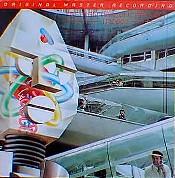 For this evaluation
I have chosen one of the all-time favorites of fellow senior contributor Greg Smith (ah,
and me too): Alan Parsons' 1977 progressive-rock classic, I, Robot. The four
pressings I have to compare are an early ‘80s Arista American pressing [AL 7002]
bearing the stamper number K7 in the run-out grooves, which I got for $3 at one of the
local used-vinyl emporiums. Next on hand is the recent British reissue by Simply Vinyl
[20651] bearing no matrix identification at all, purchased at the same emporium for $25
(list is $29.95). The final two entrants are from Mobile Fidelity. The first is the normal
half-speed version of I, Robot [MFSL 1-084] that currently sells used for about $15
to $40, depending on condition. Last up, MoFi’s Ultra Disc pressing [MHQR 1-084],
which can range in price from $100 to $150, again depending upon condition. The Mobile
Fidelity recordings were each limited to a press run total of 5000 copies made from just
four stampers. Coincidentally enough, both of the Mobile Fidelity discs bear the same A3
stamper number, indicating they were each produced from the third stamper made from the
original mother.
For this evaluation
I have chosen one of the all-time favorites of fellow senior contributor Greg Smith (ah,
and me too): Alan Parsons' 1977 progressive-rock classic, I, Robot. The four
pressings I have to compare are an early ‘80s Arista American pressing [AL 7002]
bearing the stamper number K7 in the run-out grooves, which I got for $3 at one of the
local used-vinyl emporiums. Next on hand is the recent British reissue by Simply Vinyl
[20651] bearing no matrix identification at all, purchased at the same emporium for $25
(list is $29.95). The final two entrants are from Mobile Fidelity. The first is the normal
half-speed version of I, Robot [MFSL 1-084] that currently sells used for about $15
to $40, depending on condition. Last up, MoFi’s Ultra Disc pressing [MHQR 1-084],
which can range in price from $100 to $150, again depending upon condition. The Mobile
Fidelity recordings were each limited to a press run total of 5000 copies made from just
four stampers. Coincidentally enough, both of the Mobile Fidelity discs bear the same A3
stamper number, indicating they were each produced from the third stamper made from the
original mother.